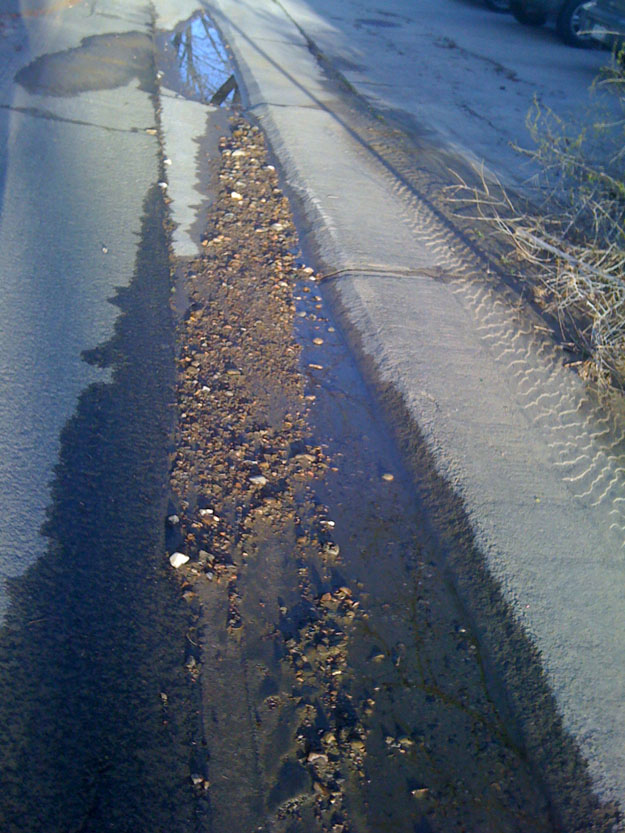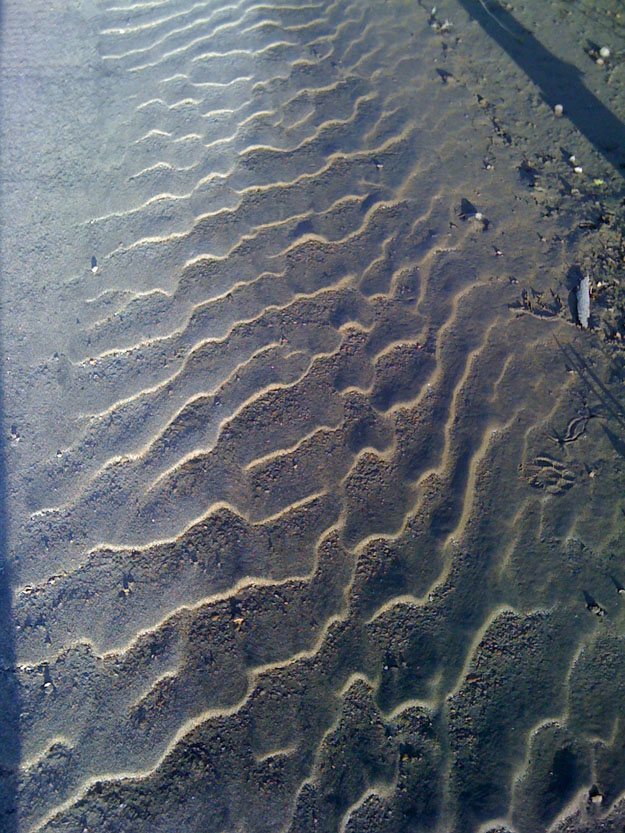My friend JT, who got her MS in geology at the University of Maryland when I did, is now at the Colorado School of Mines working on her PhD in Environmental Science and Engineering. A water main broke outside her house this morning, and I’m pleased that her first thought was to photo-document the resulting sedimentary structures for me. She says: “14 inch water main broke and there was a river going down the street that forked onto many side streets. Mine is actually just a side street. I would say the river lasted four hours and was fast moving enough to entrain small boulders up to four inches in diameter… Clearly I have been in engineering far to long and not geology because I don’t have scale ;)”
Here are the shots:



Nice ripples, eh? Note their pronounced asymmetry, with the steep side facing the photographer indicating the downstream “lee” side of the ripple. In this slightly less energetic water, pebbles and big sand grains (“bedload”) accumulated.
What else do you notice in these images?

DIFFERENT COLOURATION OF GROUND.
Dark, or black sediments.
Change in flow regime depositing finer sediments in slower moving water on the edges of the channel and down stream, and I think that I see an ichno where some critter walked through the soft sediment.